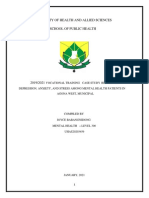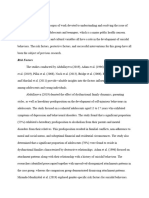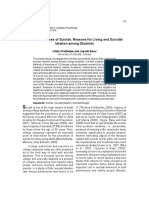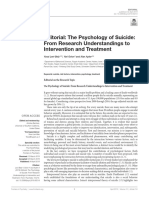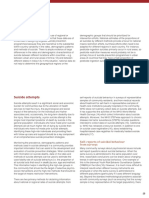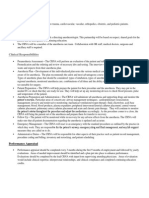0% found this document useful (0 votes)
19 views10 pagesChapter No 2
The literature review highlights the significant relationship between chronic pain, perceived burdensomeness, and suicidal ideation (SI), emphasizing that perceived burdensomeness may be a key predictor of SI in chronic pain populations. Various studies indicate that depression mediates the relationship between chronic pain symptoms and SI, particularly in adolescents, and suggest the need for early screening and intervention for depressive symptoms. Additionally, interpersonal trust is identified as a potential factor influencing perceived burdensomeness and thwarted belongingness, which are linked to suicide ideation, indicating that interventions to enhance trust may help prevent suicidal thoughts.
Uploaded by
organizationalbehaviors3Copyright
© © All Rights Reserved
We take content rights seriously. If you suspect this is your content, claim it here.
Available Formats
Download as DOCX, PDF, TXT or read online on Scribd
0% found this document useful (0 votes)
19 views10 pagesChapter No 2
The literature review highlights the significant relationship between chronic pain, perceived burdensomeness, and suicidal ideation (SI), emphasizing that perceived burdensomeness may be a key predictor of SI in chronic pain populations. Various studies indicate that depression mediates the relationship between chronic pain symptoms and SI, particularly in adolescents, and suggest the need for early screening and intervention for depressive symptoms. Additionally, interpersonal trust is identified as a potential factor influencing perceived burdensomeness and thwarted belongingness, which are linked to suicide ideation, indicating that interventions to enhance trust may help prevent suicidal thoughts.
Uploaded by
organizationalbehaviors3Copyright
© © All Rights Reserved
We take content rights seriously. If you suspect this is your content, claim it here.
Available Formats
Download as DOCX, PDF, TXT or read online on Scribd
/ 10



























